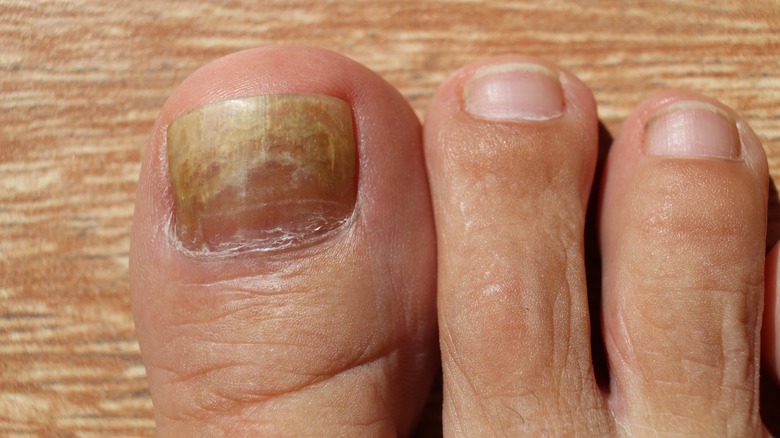What's The Difference Between Nail Eczema And Nail Psoriasis?
There are several similarities between nail eczema and nail psoriasis, according to Verywell Health. For instance, they are both chronic skin diseases and are usually preceded by having the condition somewhere else on your body. In fact, both can show up as pitting in the nails, which can look like dents made by a sharp object.
However, a few differences also exist. For example, they cause damage to the nails in a variety of ways. Nail eczema can cause thin, grooved nails, while nail psoriasis, on the other hand, might cause lifting and whitish discoloration. Also, nail eczema can start at any age. Nail psoriasis, however, usually only appears in older people.
Psoriasis is known to be a longstanding disease of the immune system, according to MedicalNewsToday. According to GP, nail eczema may be caused by factors like stress, handling irritants, contact allergies, or frequent immersion of the hands in water. People with nail eczema may also have a genetic tendency toward atopic eczema or pompholyx eczema.
Nail eczema or nail psoriasis?
According to Verywell Health, nail eczema may occur if you have had eczema on other parts of your body for a long period of time or if you've had a hand or foot rash. Other symptoms can include having lines across the width or length of your nails, wavy nails, soft nails, or nail shedding as well.
WebMD explains that nail psoriasis can cause your nails to have ridges, grooves, or pitting. There can also be a chalky, white buildup under the nails which causes them to lift away from the skin. As a matter of fact, about a third of people with nail psoriasis will catch a fungal infection, making their nails brittle, weak, or thick. Finally, your nails may change color, becoming yellow, white, or brown. They could even have tiny white or red spots under them.
If you see signs of either of these conditions, a dermatologist is the best person to consult for further diagnosis and treatment.


